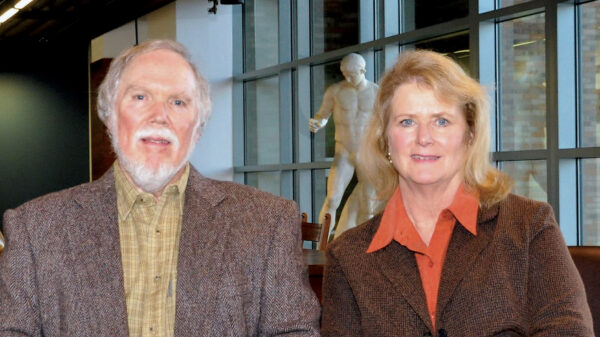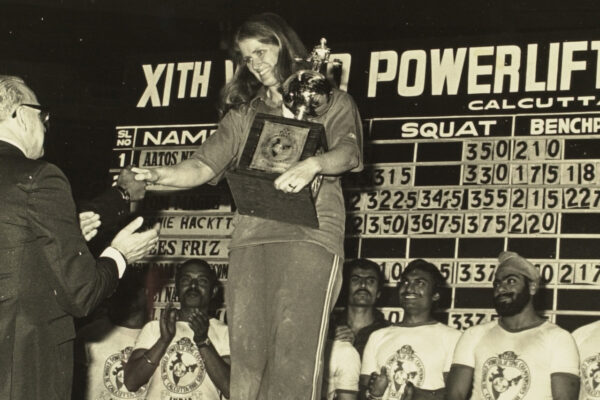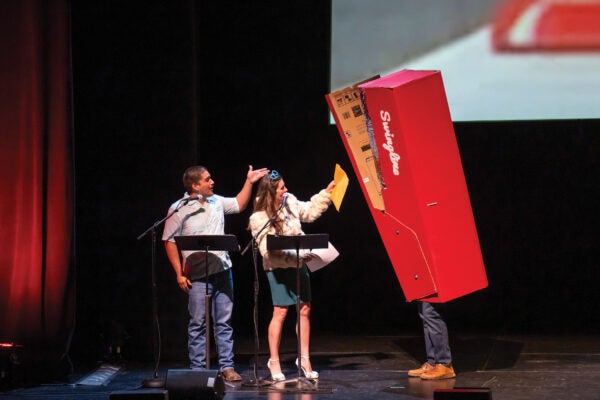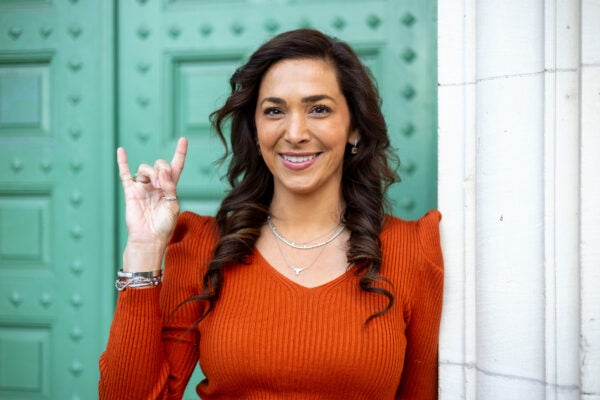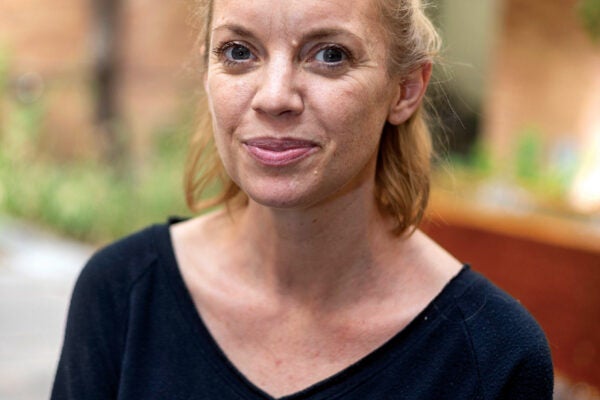Growing up in the 1960s, Jan Todd hardly considered sports an option for herself. Her father dismissed the idea of women in athletics, despite the hunting trips they took when Todd was young. Her high school had only one women’s sports team — swimming. The combination of social norms and familial beliefs kept Todd from fully recognizing her own potential.
“I could run the 100-yard dash faster than any other girl in my school,” Todd says. “I could do a lot of things which, in hindsight, you look back and you obviously had a lot of explosive strength. There was nobody that said, ‘Oh, well you should train for track and field.’ … Women doing sports wasn’t exactly in my frame of reference.”
When she was 18, Todd and her father visited Chicago’s Field Museum of Natural History. There, they stumbled across an operational hand dynamometer, a machine with a pair of handlebars that could test your grip strength, in a carnival exhibit. Her father gave it a shot, middling somewhere between the poles of “pip-squeak” and “he-man.” At Todd’s turn, her hands pushed the dial above her father’s level. They each attempted the machine once more, and when Todd’s hand strength prevailed, her father grumbled something about it being broken.
Todd was born with strong hands. But it’s her inherent determination and commitment to the details that led her to become a groundbreaking athlete and, eventually, a devoted historian of physical culture.
There was just so little knowledge about what women were capable of doing.
Once revered as the “World’s Strongest Woman” by Guinness World Records and Sports Illustrated, Todd became a celebrity in the early days of powerlifting, ensuring women’s place in the sport. Today, she is a professor of sport history in The University of Texas’ Department of Kinesiology and Health Education. She also is the co-founder, alongside her late husband, Terry Todd, of the H.J. Lutcher Stark Center for Physical Culture and Sports.
Todd’s athletic abilities might have gone unrecognized in her youth, but when she met powerlifter and professor Terry Todd while studying at Mercer University in Georgia in the early 1970s, a door was opened. Terry spent much of his free time in the gym, and as a result, so did she.
On a visit to see Terry’s family in Austin in the mid-1970s, Jan met a woman training at the Texas Athletic Club who lifted to 225 pounds in the deadlift. After talking with her for a while, Jan decided to give it a try — and she lifted the same weight on her first attempt with absolutely no weight-training. On the couple’s ride home, Terry told his wife about the history of strongwomen, and she soon became enamored with one question: “How strong could a woman be?”
“What we knew about women and strength at that time could’ve filled up a water glass,” she says. Her work in the years after that first lift would go on to expand knowledge on the subject so it could fill swimming pools.
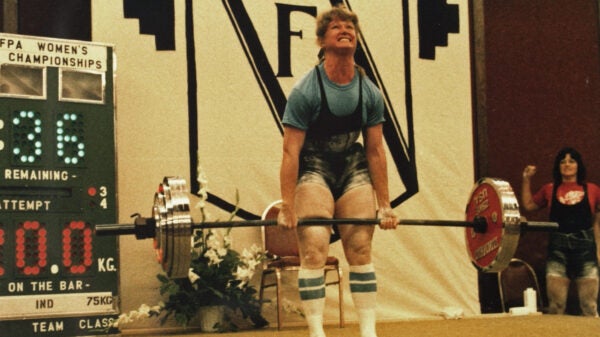
Combining her natural abilities with extensive strength-training, Todd spearheaded women’s powerlifting, first competing in men’s contests before she helped organize the first national women’s meet in 1977. A superstar within the sport, she was the first woman inducted into the International Powerlifting Hall of Fame. She even appeared on “The Tonight Show Starring Johnny Carson” in 1978 and was featured in Sports Illustrated. But Todd knew her athleticism wouldn’t last forever, and she had more to offer to the world of physical culture.
In the late ‘70s, the Todds acquired the Ottley Coulter Collection, a vast series of historical materials and health and fitness magazines that would be the first step toward building a library of resources on physical culture in America — something Terry longed for when completing his doctoral dissertation on weightlifting in the ‘60s. After acquiring the collection, which would become the foundation for the creation of the Stark Center, Jan spent much of her time digging through the documents. They brought that collection with them when they joined the faculty at UT in the early 1980s.
“I started thinking somewhere along the way that it would be fun to write a book about strongwomen, and then I realized that I didn’t know enough history to write that book,” she says. “That was part of what led me back to grad school.”
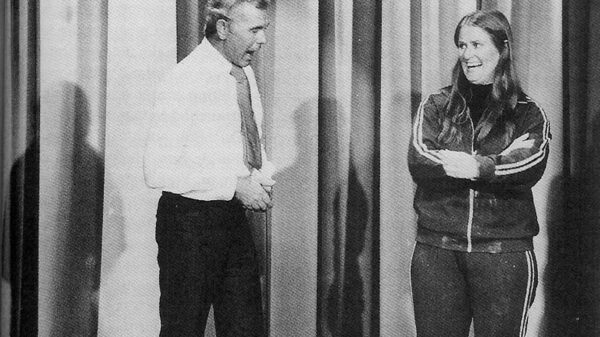
As Todd furthered her education as a doctoral student in American studies, while teaching full time in the Kinesiology and Health Education Department, she studied the same historically ingrained fears of physically strong women that had affected her own ability to participate in sports in her youth. The question of women’s strength that led her to test the limits of her own body bolstered another curiosity — this time into the history of women and exercise.
“There was just so little knowledge about what women were capable of doing, and so many myths about what would happen,” Todd says. “A lot of it is the same rhetoric that you’ve heard around women in sport in general, you know, about the dangers of running too far or jumping, which might lead to the prolapse of the uterus, crazy things like that, all of which, of course, didn’t turn out to be true.”

The Stark Center, named after H.J. Lutcher Stark, a donor through the Stark Foundation and former chairman of The University of Texas Board of Regents, moved from its original home in Anna Hiss Gym to Darrell K Royal-Texas Memorial Stadium in 2008. It serves as a physical manifestation of the Todds’ immense influence on the study of physical culture and the university at large.
“Before Terry and I came along,” she says, “very few people were actually paying attention to the history of exercise.”
You could fill a few textbooks with the accomplishments Todd has made in her life so far — but her prime focus going forward is to secure enough funding to ensure the legacy of the Stark Center and, in turn, of her and Terry.
Today, Todd, who has published numerous books and scholarly articles, continues to influence gender in the cultural lexicon of sports and exercise, even in small ways. In her Women in Sports course at the university, she instructs her students to find Wikipedia pages of female athletes whose stories have been shortchanged on the virtual encyclopedia. Students become their own historians, researching and updating the pages of women in sports who’ve been lost to the public memory.
“The old story in history is that history is always what gets saved,” Todd says. “That’s been so much of the story, especially with women’s history, is that our stories just don’t get recorded.”
Though it’s simply a class assignment, this activity rewrites the gendered history of sports — something Todd has done for nearly her entire life.
